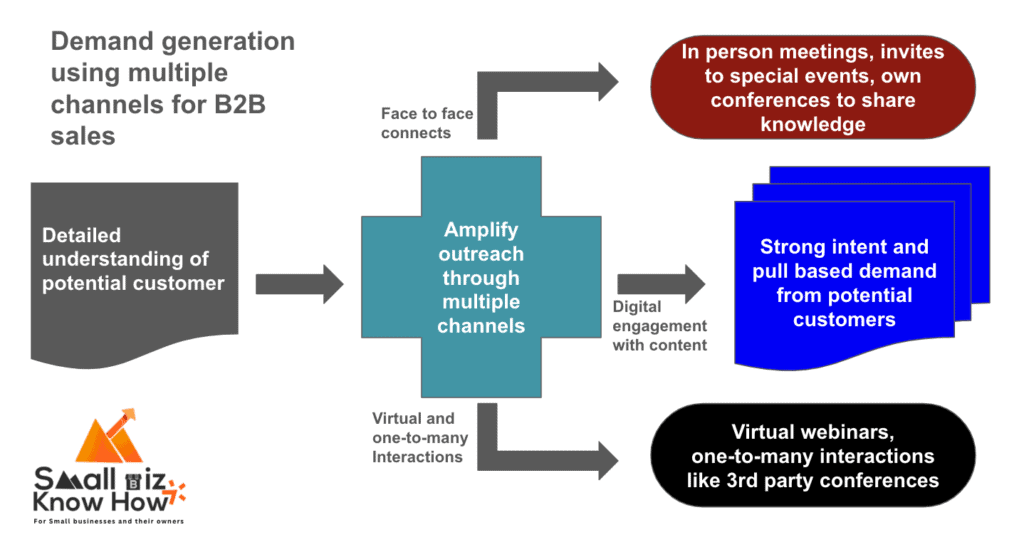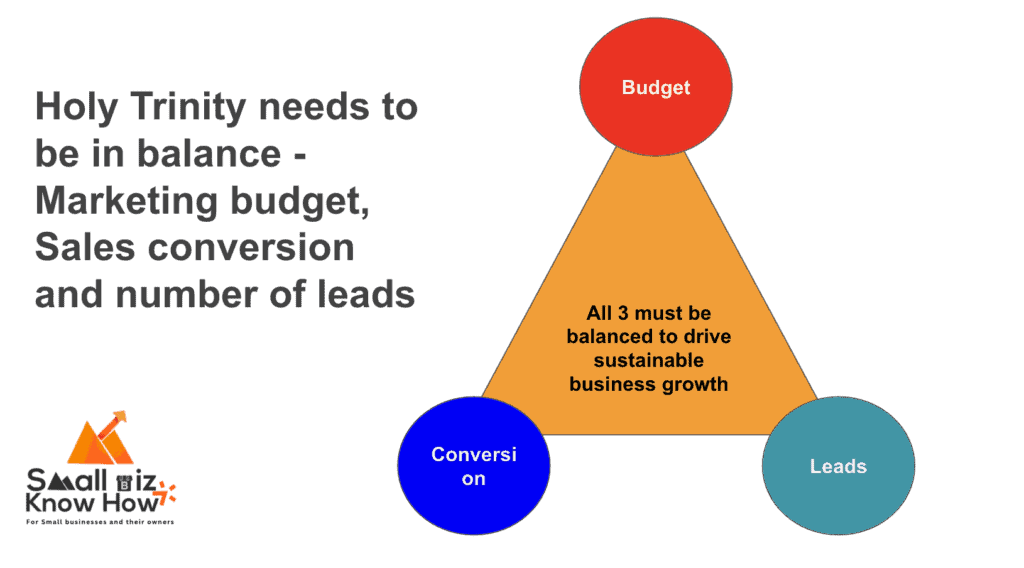I had the opportunity of sitting down with a business owner friend over a cup of coffee, discussing the ins and outs marketing for small businesses. Our conversation delved into finding the right clients for cold outreach, crafting compelling cold emails, and measuring success through key metrics.
We touched on the importance of personalization, effective subject lines, and the role of follow-ups in nurturing relationships. We also compared the strategies of cold calling versus cold emailing and explored tools to streamline our outreach efforts.
Our discussion highlighted common mistakes to avoid and emphasized the value of building genuine connections through engaging content.
This article encapsulates our insightful conversation, offering practical tips and strategies to elevate your cold outreach game and improve your B2B sales overall as a small business owner.
So, let’s dive in and discover the secrets to successful communication and engagement with your prospects.
Understanding Cold Outreach for Small Business

Cold outreach can be a powerful tool in your small business’s arsenal, but it requires a strategic approach and careful execution to yield results. At its core, cold outreach refers to reaching out to potential clients or customers who have had no prior interaction with your business.
This can be through methods like cold emails or cold calls, where the recipient is not expecting your communication.
For startups and small businesses, cold outreach can be a game-changer in acquiring new clients, expanding your customer base, and ultimately growing your business.
However, it’s essential to understand that cold outreach is not about spamming people with generic messages. It’s about crafting targeted and personalized communications that resonate with your audience.
One of the key challenges in cold outreach for small businesses is finding the right balance between reaching out to enough prospects to generate leads and maintaining a high level of quality in your interactions.
It’s crucial to target prospects who are likely to be interested in your products or services and who fit your ideal customer profile.
Effective cold outreach for small businesses also involves understanding the different channels available for outreach, such as cold emails and cold calls. Each channel has its own strengths and weaknesses, and choosing the right one depends on factors like your target audience, the nature of your offering, and your business goals.
Furthermore, successful cold outreach requires a compelling value proposition and a clear call to action. You need to communicate why your product or service is valuable to the recipient and what action you want them to take next.
This requires research, creativity, and a deep understanding of your target market.
In summary, cold outreach for small businesses is about more than just sending out mass emails or making random phone calls.
Basically, it’s about strategically identifying and engaging with potential clients in a way that adds value to their lives and drives business growth.
The Basics of Cold Email Outreach

Cold email outreach is a fundamental aspect of modern marketing strategies for small businesses. It involves sending unsolicited emails to potential customers or clients who have not previously engaged with your brand.
Here are the key elements to consider when embarking on a cold email outreach campaign:
- Targeted Audience: Before crafting your cold emails, research and identify your target audience. Understand their pain points, needs, and preferences to tailor your message effectively.
- Personalization: Personalization is crucial in cold emails. Address recipients by their name, mention specific details related to their business or industry, and show that you’ve done your homework.
- Clear Value Proposition: Clearly communicate the value proposition of your product or service. Explain how it solves a problem or fulfills a need for the recipient.
- Compelling Subject Line: The subject line is the first thing recipients see. Make it compelling, relevant, and intriguing to increase open rates.
- Brief and Clear Content: Keep your email concise and to the point. Avoid long paragraphs and unnecessary details. Focus on the benefits and outcomes for the recipient.
- Call to Action (CTA): Include a clear and actionable CTA in your email. Whether it’s scheduling a call, visiting your website, or downloading a resource, guide recipients on the next steps.
Lets look at the below example
Suppose you run a digital marketing agency targeting small businesses. Your cold email could be personalized for a local bakery owner:
Subject: Enhance Your Online Presence with Proven Digital Strategies
Hi [Recipient’s Name],
I noticed your charming bakery during my recent visit to [City Name]. As a fellow small business owner, I understand the challenges of competing in today’s digital landscape.
At [Your Agency Name], we specialize in helping businesses like yours thrive online. Our tailored digital marketing solutions have helped bakeries increase their online visibility, attract more customers, and boost sales.
Would you be interested in a complimentary consultation to discuss how we can enhance your online presence and attract more local customers?
Best regards, [Your Name] [Your Agency Name] [Contact Information]
This example demonstrates the key elements of effective cold email outreach: personalization, value proposition, clear call to action, and a professional yet approachable tone.
Getting Started: Cold Outreach Strategies for Startups

Alright, let’s dive into the exciting world of cold outreach strategies for startups! If you’re a small business looking to expand your reach and connect with potential clients or customers, cold outreach can be a game-changer. It’s like reaching out to a new friend and starting a conversation that could lead to great opportunities.
Here are some friendly and effective cold outreach strategies to get you started on the right foot:
- Define Your Target Audience: The first step is to clearly define who you want to reach out to. Create buyer personas or customer profiles to understand their demographics, interests, pain points, and needs.
- Research and Gather Data: Once you know your target audience, research and gather relevant data. This includes email addresses, phone numbers, social media profiles, and any other information that can help personalize your outreach.
- Craft Compelling Messaging: Your messaging should be compelling, concise, and tailored to resonate with your target audience. Highlight the benefits of your product or service and how it can solve their problems or fulfill their needs.
- Choose the Right Outreach Channel: Decide whether you’ll be using cold emails, cold calls, social media outreach, or a combination of these channels. Each channel has its own strengths and requires a different approach.
- Create a Follow-up Strategy: Cold outreach is often a multi-step process. Create a follow-up strategy to nurture leads and build relationships over time. Follow-ups can include additional emails, phone calls, or personalized messages.
- Track and Analyze Results: Use analytics tools to track the performance of your cold outreach campaigns. Monitor open rates, response rates, conversions, and other metrics to measure success and make data-driven improvements.
Finding Small Businesses to Cold Email

In today’s competitive business landscape, cold email outreach has emerged as a vital strategy for small businesses to connect with potential clients and expand their customer base. However, the success of a cold email campaign hinges on the ability to identify and target the right small businesses effectively.
This step-by-step process provides actionable insights on how to find and reach out to small businesses through strategic methods such as defining ideal customer profiles, leveraging online resources, attending networking events, utilizing social media platforms, engaging in content marketing, and continuously monitoring and refining for improved results.
Also look at my article on how to generate leads to understand better.
Mastering these techniques can significantly enhance your cold email outreach efforts and drive business growth.
- Define Your Ideal Customer Profile (ICP): Start by outlining the characteristics of small businesses that are most likely to benefit from your product or service. Consider factors like industry, company size, revenue, geographic location, and pain points.
- Utilize Online Directories and Databases: Leverage online resources such as industry-specific directories, business listing websites, and databases like LinkedIn, Crunchbase, or Hoovers to identify potential small businesses that match your ICP criteria.
- Attend Networking Events and Conferences: Participate in networking events, conferences, trade shows, and industry meetups where small business owners gather. Use these opportunities to make connections, gather contacts, and learn more about potential prospects.
- Utilize Social Media Platforms: Use social media platforms like Twitter, LinkedIn, and Facebook to search for and connect with small businesses in your target market. Engage in relevant groups, participate in discussions, and follow companies of interest.
- Leverage Existing Customer Networks: Reach out to your existing customers and ask for referrals or recommendations to other small businesses they know that could benefit from your offerings. Word-of-mouth referrals can be highly effective in generating new leads.
- Use Advanced Search Filters: When using search engines or business directories, utilize advanced search filters to narrow down your results based on specific criteria such as location, industry keywords, company size, or recent activity.
- Engage in Content Marketing: Create valuable and informative content related to your industry or niche. Share this content through your website, blog, social media channels, and email newsletters to attract and engage small businesses who may be interested in your solutions.
- Invest in Paid Advertising: Consider investing in targeted paid advertising campaigns on platforms like Google Ads, LinkedIn Ads, or Facebook Ads to reach small businesses actively searching for solutions like yours.
- Build and Segment Your Email List: Once you’ve identified potential small businesses, build and segment your email list based on criteria such as industry, company size, or geographic location. Personalize your cold email outreach based on these segments for better engagement.
- Monitor and Iterate: Continuously monitor the performance of your cold email outreach efforts. Track metrics such as open rates, response rates, conversions, and adjust your approach based on data-driven insights to improve results over time.
Targeting the Right Audience: Small Business Cold Emailing Tips

When it comes to cold email outreach for small businesses, one of the critical factors determining success is targeting the right audience effectively.
Here are some actionable tips to help you refine your targeting strategy:
- Define Your Ideal Customer Profile (ICP): Start by clearly defining the characteristics of small businesses that are most likely to benefit from your product or service. Consider factors such as industry, company size, revenue, pain points, and geographic location.
- Segment Your Email List: Once you’ve identified your ICP, segment your email list accordingly. Create separate segments based on industry, company size, geographic location, or other relevant criteria. This allows you to personalize your cold emails for better engagement.
- Personalization is Key: Personalize your cold emails by addressing recipients by their name and mentioning specific details related to their business or industry. Show that you’ve done your homework and tailor your message to resonate with their needs.
- Craft Compelling Subject Lines: The subject line is the first thing recipients see. Make it compelling, relevant, and intriguing to increase open rates. A personalized subject line that addresses a pain point or offers a benefit can capture attention.
- Focus on Benefits: In the body of your cold email, focus on highlighting the benefits of your product or service rather than just listing features. Clearly communicate how your offering can solve a problem or fulfill a need for the recipient.
- Include a Clear Call to Action (CTA): Every cold email should include a clear and actionable CTA. Whether it’s scheduling a call, visiting your website, downloading a resource, or signing up for a demo, guide recipients on the next steps.
- Follow-Up Strategically: Implement a follow-up strategy to nurture leads and build relationships over time. Send follow-up emails at strategic intervals, and customize the content based on recipient behavior or interactions.
By targeting the right audience with personalized and compelling cold emails, small businesses can increase their chances of success in cold email outreach campaigns.
Crafting Your Cold Email: Important Elements and Structure

Crafting a successful cold email for small business outreach requires careful attention to key elements and a well-structured approach. Here’s a breakdown of the essential components and tips to make your cold emails effective:
- Subject Line: Start with a compelling subject line that grabs attention and entices the recipient to open the email. Use personalization, curiosity, or a benefit-driven approach in your subject line.
- Introduction: Begin your email with a brief and friendly introduction. Mention how you came across their business or why you believe your offering could be valuable to them.
- Personalization: Personalize your email by addressing the recipient by their name and including specific details relevant to their business or industry. This shows that you’ve done your research and adds a personal touch.
- Value Proposition: Clearly communicate the value proposition of your product or service. Explain how it can solve a problem, fulfill a need, or provide a benefit to the recipient’s business.
- Benefits Over Features: Focus on highlighting the benefits of your offering rather than just listing features. Show how your solution can make a positive impact on their business or streamline their processes.
- Social Proof: Include any relevant social proof such as testimonials, case studies, or client success stories to build credibility and trust.
- Call to Action (CTA): Include a clear and specific call to action (CTA) that prompts the recipient to take the next step. Whether it’s scheduling a call, requesting a demo, or visiting your website, make it easy for them to respond.
- Follow-Up Plan: Mention that you will follow up on your email to keep the conversation going. Outline the next steps or a timeline for follow-up to set expectations.
- Polite Closing: End your email with a polite closing, such as “Looking forward to hearing from you” or “Thank you for your time and consideration.”
- Signature: Include a professional signature with your full name, job title, company name, and contact information. This adds credibility and makes it easy for recipients to get in touch.
By incorporating these elements and structuring your cold email effectively, you can increase the chances of engagement and response from your target audience. Remember to tailor each email to the recipient’s needs and preferences for better results in your cold outreach efforts.
Writing a Cold Email that Works: Step-by-Step Guide

Crafting a cold email that effectively captures attention and generates a positive response requires a strategic approach and attention to detail.
Follow these steps to create a compelling cold email for your small business outreach:
- Research Your Target Audience:
- Start by researching and understanding your target audience’s demographics, interests, pain points, and needs.
- Use this information to tailor your message and make it relevant to the recipient.
- Define Your Objective:
- Clearly define the purpose of your cold email. Is it to introduce your product/service, schedule a meeting, or request feedback?
- Having a clear objective helps in crafting a focused and impactful message.
- Craft a Compelling Subject Line:
- Create a subject line that is concise, attention-grabbing, and relevant to the recipient. Personalization or mentioning a benefit can increase open rates.
- Example: “Boost Your Sales with [Your Solution] – Free Consultation Inside!”
- Introduction and Personalization:
- Start your email with a brief and friendly introduction. Mention how you came across their business or why you believe your offering could be valuable to them.
- Personalize the email by addressing the recipient by name and including specific details related to their business or industry.
- Highlight Benefits and Value Proposition:
- Clearly communicate the benefits of your product or service. Focus on how it can solve a problem, fulfill a need, or provide value to the recipient.
- Use bullet points or concise sentences to highlight key benefits and features.
- Build Credibility with Social Proof:
- Include any relevant social proof such as client testimonials, case studies, or industry awards to build credibility and trust.
- Social proof can help alleviate skepticism and encourage action from the recipient.
- Call to Action (CTA):
- Include a clear and specific call to action (CTA) that prompts the recipient to take the desired action. Whether it’s scheduling a call, requesting a demo, or visiting your website, make it easy for them to respond.
- Example CTA: “Schedule a 15-minute call to discuss how [Your Solution] can benefit your business.”
- Keep it Concise and Readable:
- Keep your email concise and easy to read. Avoid long paragraphs and unnecessary details.
- Use short sentences, bullet points, and white space to improve readability.
- Proofread and Test:
- Before sending, proofread your email for grammar, spelling, and formatting errors.
- Test your email on different devices and email clients to ensure it displays correctly.
- Follow-Up Plan:
- Mention that you will follow up on your email to keep the conversation going. Outline the next steps or a timeline for follow-up to set expectations.
By following these steps and crafting a well-structured cold email, you can increase the likelihood of engagement and success in your small business outreach efforts. Tailor each email to the recipient’s needs and preferences for maximum impact.
Effective Subject Lines for Cold Outreach Emails

Crafting compelling subject lines for cold emails is a strategic process that begins with a deep understanding of your audience.
By grasping their preferences, pain points, interests, and needs, you can tailor subject lines that resonate with what matters most to them.
Focus on highlighting the benefits or solutions your product or service offers, using language that communicates value and addresses specific problems or desires.
Personalization is key; include the recipient’s name or personalized details relevant to their business or industry to increase open rates and engagement.
Keep subject lines concise, clear, and to the point, avoiding vague or misleading language. Create a sense of urgency or curiosity with words or phrases that prompt recipients to open the email to learn more.
Testing different subject lines through A/B testing helps identify the most effective language, tone, and style for your target audience, allowing for iterative improvements based on data and feedback.
This strategic approach enhances the likelihood of your subject lines standing out in crowded inboxes and increasing engagement and response rates.
Here are some examples of catchy subject lines which I have seen.
- “Your Path to Financial Freedom Starts Here”
- “Say Goodbye to [Pain Point] – Hello to [Benefit]!”
- “Unlock Hidden Opportunities for Growth”
- “Time to Upgrade: [Your Solution] Awaits!”
- “Elevate Your Business Game – Let’s Collaborate!”
- “Ready for a Change? Let’s Make It Happen!”
- “From Challenges to Solutions: Let’s Work Together”
- “Unleash Your Business Potential – Let’s Chat!”
- “Get More Done in Less Time – Here’s How”
- “Say Hello to Success: [Your Solution] Inside!”
Personalization and Customization in Cold Emailing

When it comes to crafting personalized cold emails, my approach revolves around understanding the recipient on a deeper level.
I delve into their company’s challenges, industry trends, and specific pain points. This research allows me to tailor my message in a way that resonates with their needs and priorities.
I start by addressing the recipient by name and acknowledging any recent achievements or milestones related to their business.
This personal touch demonstrates that I’ve taken the time to learn about them and establishes a genuine connection from the outset.
I then weave in relevant insights or industry-specific references to show that I understand their unique situation.
Whether it’s mentioning a recent industry report, citing a mutual connection, or referencing a specific challenge they’re facing, I aim to demonstrate my knowledge and relevance to their world.
Basically, I customize the value proposition of my product or service to align with their pain points and goals.
By showcasing how my offering can directly address their needs and drive tangible results, I create a compelling case for collaboration.
Overall, personalization goes beyond just using the recipient’s name; it’s about showing genuine interest, understanding their context, and offering tailored solutions that add real value to their business.
This approach has consistently yielded positive responses and fostered meaningful connections in my cold email outreach efforts.
Tools and Software for Cold Email Outreach

In today’s digital landscape, leveraging the right tools is paramount for successful cold email outreach campaigns. These tools not only streamline processes but also enhance personalization, tracking, and overall campaign effectiveness.
From email tracking software that provides real-time analytics to CRM systems that centralize customer data, each tool serves a specific purpose in optimizing outreach efforts.
Email automation tools and personalization software further elevate engagement by automating tasks and tailoring messages to individual recipients.
Additionally, email verification services ensure deliverability and maintain a clean email list. Harnessing these tools equips businesses with the capabilities needed to drive impactful and personalized cold email campaigns.
- Email Tracking Software:
- Benefit: Provides real-time notifications and analytics on email opens, clicks, and responses, allowing you to track recipient engagement and adjust your strategy accordingly.
- Prerequisites: Integration with your email client (Gmail, Outlook, etc.), understanding of email metrics and analytics.
- CRM Software (Customer Relationship Management):
- Benefit: Centralizes customer data, tracks interactions, and automates follow-up tasks, enabling personalized and timely communication with prospects.
- Prerequisites: Data organization, CRM setup and customization, training for team members.
- Email Automation Tools:
- Benefit: Streamlines email campaign management, automates follow-ups, and schedules emails based on recipient behavior, improving efficiency and scalability.
- Prerequisites: Email list segmentation, content creation for automated sequences, compliance with email regulations.
- Personalization Tools:
- Benefit: Helps create personalized content at scale, including dynamic fields (name, company) and customized messaging, enhancing recipient engagement and response rates.
- Prerequisites: Data integration for personalization, understanding of customer segmentation and preferences.
- Email Verification Services:
- Benefit: Ensures email deliverability by verifying email addresses, reducing bounce rates, and maintaining a clean email list for improved inbox placement.
- Prerequisites: Regular email list cleaning, compliance with anti-spam regulations, integration with email marketing platforms.
These tools, when used effectively and in combination with each other, can enhance the efficiency, effectiveness, and personalization of your cold email outreach campaigns.
Cold Calling vs. Cold Emailing: Pros and Cons
Cold calling and cold emailing are two popular methods for initiating contact with potential customers in sales and marketing.
While both approaches aim to generate leads and drive conversions, they differ in their execution, advantages, and challenges.
Here’s a comparison of the pros and cons of cold calling and cold emailing.
| Aspect | Cold Calling | Cold Emailing |
|---|---|---|
| Pros | – Immediate interaction and feedback | – Scalability and reach |
| – Ability to build rapport quickly | – Cost-effective compared to traditional methods | |
| – Direct communication allows for real-time persuasion | – Trackable metrics (opens, clicks, responses) | |
| Cons | – Intrusive; potential for rejection | – Lower response rates compared to warm leads |
| – Time-consuming; limited reach per hour | – Risk of ending up in spam or promotional folders | |
| – Requires phone skills and script preparation | – Lack of personal touch and human connection | |
| – Compliance with do-not-call regulations | – Crafting effective subject lines and email content is crucial |
Optimizing Your Cold Outreach Campaign

Optimizing your cold outreach campaign is a dynamic process aimed at enhancing the efficiency and effectiveness of your outreach efforts. It begins with thorough data analysis to identify trends, patterns, and areas for improvement.
By segmenting your target audience based on demographics, behavior, and preferences, you can tailor messages for better relevance and personalization.
A/B testing various elements such as subject lines, content, CTAs, and send times allows you to identify what resonates best with your audience and optimize for higher engagement rates.
Utilizing email tracking and analytics tools provides valuable insights into recipient behavior, allowing you to adjust and refine your approach accordingly.
Moreover, integrating automation tools streamlines repetitive tasks, ensures timely follow-ups, and improves workflow efficiency.
Regularly reviewing and optimizing your email list for accuracy and deliverability helps maintain a high-quality database and enhances overall campaign performance.
By continually refining targeting, personalization, content, timing, and automation, you can optimize your cold outreach campaign to achieve higher response rates, increased conversions, and ultimately, business success.
Measuring Success: Cold Email Metrics to Track

As I launched my latest cold email campaign, tracking key metrics became crucial to gauge its success and make informed decisions for future outreach efforts. Here’s how I tracked and analyzed the performance of my campaign:
- Email Sent:
- Total Emails Sent: 1000
- Open Rate Calculation:
- Emails Opened: 250
- Open Rate = (Emails Opened / Total Emails Sent) * 100
- Open Rate = (250 / 1000) * 100
- Open Rate = 25%
- Click-Through Rate (CTR) Calculation:
- Clicks on Links: 100
- Click-Through Rate = (Clicks / Emails Opened) * 100
- CTR = (100 / 250) * 100
- CTR = 40%
- Conversion Rate Calculation:
- Conversions (Response or Desired Action): 50
- Conversion Rate = (Conversions / Emails Sent) * 100
- Conversion Rate = (50 / 1000) * 100
- Conversion Rate = 5%
- Call-to-Action (CTA) Response Rate Calculation:
- CTA Clicks: 75
- CTA Response Rate = (CTA Clicks / Emails Sent) * 100
- CTA Response Rate = (75 / 1000) * 100
- CTA Response Rate = 7.5%
Here’s a table summarizing the numbers and metrics for the cold email campaign:
| Metric | Value | Calculation |
|---|---|---|
| Total Emails Sent | 1000 | |
| Emails Opened | 250 | |
| Open Rate | 25% | (Emails Opened / Total Emails Sent) * 100 |
| Clicks on Links | 100 | |
| Click-Through Rate (CTR) | 40% | (Clicks / Emails Opened) * 100 |
| Conversions | 50 | |
| Conversion Rate | 5% | (Conversions / Emails Sent) * 100 |
| CTA Clicks | 75 | |
| CTA Response Rate | 7.5% | (CTA Clicks / Emails Sent) * 100 |
For each business, the degree of success depends on their industry and the level of brand awareness. The process highlighted above is a template you can use to measure your progress. The key is to keep improving.
Building Relationships through Cold Outreach

Building relationships through cold outreach is a strategic endeavor that requires a thoughtful and personalized approach. Let me walk you through how I would go about it with a potential prospect:
- Research and Targeting: Before reaching out, I conduct thorough research to understand the prospect’s industry, challenges, goals, and any recent news or developments related to their business. This helps me tailor my messaging and offer solutions that are relevant and valuable to them.
- Personalized Outreach: I craft a personalized email that addresses the prospect by name and highlights specific insights or pain points relevant to their business. I avoid generic templates and instead focus on creating a genuine connection by showing that I’ve taken the time to understand their needs.
- Value Proposition: In my email, I clearly articulate the value proposition of my product or service and how it can address the prospect’s challenges or help them achieve their goals. I focus on benefits rather than features and aim to showcase the unique advantages of working with us.
- Engagement and Follow-Up: After sending the initial email, I follow up with a personalized follow-up message that adds value, such as sharing relevant resources, case studies, or success stories. I use email tracking tools to monitor engagement and ensure timely follow-ups based on recipient behavior.
- Building Rapport: As the conversation progresses, I focus on building rapport and trust by being responsive, transparent, and helpful. I aim to establish myself as a trusted advisor rather than just a salesperson, offering insights, advice, and support tailored to the prospect’s needs.
- Long-Term Relationship: My goal is to nurture a long-term relationship with the prospect, even if they’re not immediately ready to make a purchase. I stay engaged through periodic check-ins, relevant updates, and continued value-added communication to stay top-of-mind and position myself as a reliable partner.
By following this process, I aim to turn cold outreach into a warm and mutually beneficial relationship built on trust, understanding, and value delivery.
The Role of Follow-ups in Cold Emailing

follow-ups are crucial in cold emailing and can significantly impact response rates and overall campaign and prospecting success.
Here are five examples of effective follow-up strategies along with statistics to emphasize their importance:
- Polite Reminder Follow-up:
- Subject: Quick Follow-up: [Topic of Previous Email]
- Message: Hi [Prospect’s Name], I wanted to quickly follow up on my previous email regarding [topic]. I understand you’re busy, but I believe [your solution] could really benefit your business. Would love to hear your thoughts.
- Value-Added Content Follow-up:
- Subject: [Resource] to Help Address [Prospect’s Pain Point]
- Message: Hi [Prospect’s Name], I came across this [resource] that I think could help address [specific pain point] your industry is facing. Thought you might find it valuable. Let me know if you’d like to discuss further.
- Social Proof Follow-up:
- Subject: Success Story: How [Client Name] Achieved [Benefit] with Us
- Message: Hi [Prospect’s Name], I wanted to share a success story from [Client Name], who achieved [specific benefit] using our [product/service]. I believe we can do the same for your business. Let’s schedule a call to discuss further.
- Time-Sensitive Offer Follow-up:
- Subject: Limited Time Offer: [Discount/Incentive]
- Message: Hi [Prospect’s Name], We’re currently running a limited-time offer on [product/service] exclusively for businesses in [industry]. I wanted to make sure you don’t miss out on this opportunity. Let’s connect to explore how we can help your business.
- Personalized Follow-up:
- Subject: Reconnecting: [Topic of Previous Conversation]
- Message: Hi [Prospect’s Name], I enjoyed our conversation about [topic] last time. Just wanted to check in and see if you had any further thoughts or questions. Let’s schedule a call to discuss in more detail.
The key message to convey is that follow-ups play a pivotal role in ensuring success in cold emailing, with statistics showing a significant increase in response rates with persistent and strategic follow-up efforts.
Avoiding Common Mistakes in Cold Outreach

In navigating cold outreach, I’ve learned firsthand the importance of avoiding common mistakes that can hinder success and damage relationships with prospects.
Here are some key tips on what one must never do in cold outreach:
- Avoid Generic Templates: I steer clear of using generic email templates that lack personalization. Each outreach should be tailored to the recipient’s specific needs, pain points, and interests to grab their attention and show genuine interest.
- Don’t Overwhelm with Information: I refrain from overwhelming prospects with too much information in the initial outreach. Instead, I focus on delivering a concise and compelling message that piques their curiosity and prompts further engagement.
- Never Ignore Follow-ups: I never overlook the importance of follow-up emails. Following up consistently shows persistence, professionalism, and commitment to building a relationship. Ignoring follow-ups can lead to missed opportunities and a negative perception.
- Avoid Pushy Language: I avoid using pushy or aggressive language that can come across as spammy or intrusive. Instead, I aim for a conversational tone that fosters trust, respect, and a genuine desire to help.
- Don’t Forget to Proofread: I always proofread my emails before sending to catch any typos, grammatical errors, or formatting issues. Sloppy mistakes can detract from professionalism and credibility.
- Avoid Irrelevant Outreach: I ensure that my outreach is relevant to the recipient’s industry, role, and challenges. Sending irrelevant messages can lead to disinterest, unsubscribes, or negative feedback.
- Never Skip Research: I never skip the research phase before reaching out to prospects. Understanding their business, pain points, and objectives allows me to craft a more personalized and compelling message.
By steering clear of these common mistakes, I’ve been able to improve the effectiveness of my cold outreach efforts, build stronger relationships with prospects, and achieve better results in terms of response rates and conversions.
